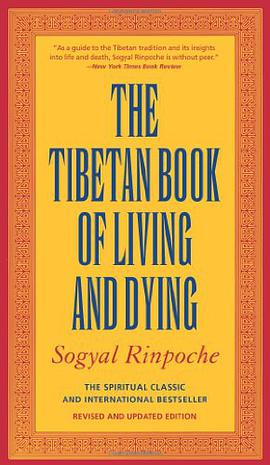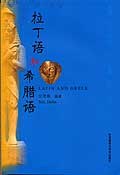The Tibetan Book of Living and Dying
内容简介
In this major and comprehensive work, Buddhist meditation master and international speaker Sogyal Rinpoche brings together the ancient wisdom of Tibet with modern research on death and dying and the nature of the universe. With unprecedented scope, The Tibetan Book of Living and Dying clarifies the majestic vision of life and death that underlies The Tibetan Book of the Dead. Sogyal Rinpoche presents simple yet powerful practices from the heart of the Tibetan tradition that anyone, whatever their religion or background, can do to transform their lives, prepare for death, and help the dying.
Rinpoche shows the hope there is in death: how we can go beyond denial and fear to discover what it is in us that survives death and is changeless. He presents a lucid, inspiring, and complete introduction to the practice of meditation, to karma and rebirth, and to the trials and rewards of the spiritual path. He gives advice on how to care for the dying with love and compassion and offer them spiritual assistance.
Rinpoche presents his own vision of the near-death experience from the Tibetan perspective. He explains in detail the "bardos," those states of consciousness after death that have fascinated and tantalized Western artists, psychologists, scientists, doctors, and philosophers ever since the publication of The Tibetan Book of the Dead in 1927.
The Tibetan Book of Living and Dying is not only a spiritual masterpiece but also a manual, a guide, a work of reference, and a source of sacred inspiration. It has been written to inspire all who read it to begin the journey to enlightenment and so become "servants of peace," working in the world with joy, wisdom, and compassion to take part in safeguarding the future of humanity.
......(更多)
作者简介
Sogyal Rinpoche was born in Tibet and raised by one of the most revered spiritual masters of this century, Jamyang Khyentse Chökyi Lodrö. With the Chinese occu-pation of Tibet, he went into exile with his master, who died in 1959 in Sikkim in the Himalayas. After university studies in Delhi and Cambridge, England, he acted as translator and aide to several leading Tibetan masters, and began teaching in the West in 1974. Rinpoche sees his life's task as transplanting the wisdom of the Buddha to the West by offering training in the vision set out in The Tibetan Book of Living and Dying. This training can enable those who follow it to understand, embody, and integrate Buddhist teachings into their everyday lives.
Rinpoche's reputation as an authority on the teachings associated with The Tibetan Book of Living and Dying and his dialogue with leading figures in the fields of psychology, science, and healing make him a sought-after speaker at international conferences and lectures. He travels extensively, teaching in North America, Europe, Australia, and Asia, and is the founder and spiritual director of Rigpa, a network of Buddhist centers and groups around the world.
......(更多)
目录
Foreword
Preface
Pt. 1 Living
1 In the Mirror of Death 3
2 Impermanence 15
3 Reflection and Change 28
4 The Nature of Mind 41
5 Bringing the Mind Home 56
6 Evolution, Karma, and Rebirth 82
7 Bardos and Other Realities 102
8 This Life: The Natural Bardo 111
9 The Spiritual Path 127
10 The Innermost Essence 150
Pt. 2 Dying
11 Heart Advice on Helping the Dying 173
12 Compassion: The Wish-Fulfilling Jewel 187
13 Spiritual Help for the Dying 209
14 The Practices for Dying 223
15 The Process of Dying 244
Pt. 3 Death and Rebirth
16 The Ground 259
17 Intrinsic Radiance 274
18 The Bardo of Becoming 287
19 Helping after Death 299
20 The Near-Death Experience: A Staircase to Heaven? 319
Pt. 4 Conclusion
21 The Universal Process 339
22 Servants of Peace 356
Appendix 1: My Teachers 367
Appendix 2: Questions about Death 371
Appendix 3: Two Stories 378
Appendix 4: Two Mantras 386
Notes 392
Selected Bibliography 406
Acknowledgments 409
Index 415
......(更多)
读书文摘
......(更多)






